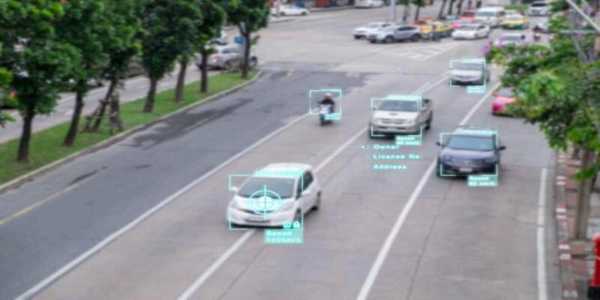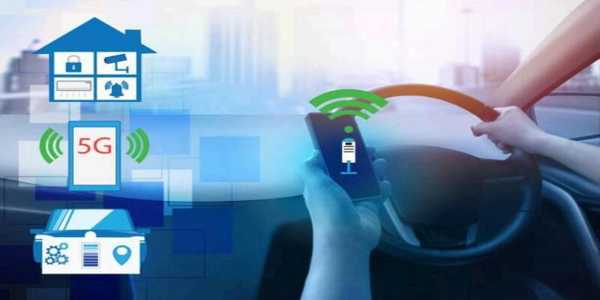The advent of autonomous vehicles, erstwhile a distant reverie, is now swiftly transmuting into an incontrovertible actuality. These self-governing automata are poised to engender a seismic upheaval in suburban real estate markets, fundamentally recalibrating property valuation paradigms and residential predilections. The autonomous vehicles real estate topography stands on the precipice of a profound metamorphosis as the far-reaching implications of these technological behemoths permeate the suburban ethos.
Paradigm Shifts In Suburban Property Self-Driving Cars
As autonomous vehicles inexorably insinuate themselves into quotidian existence, a tectonic shift in residential inclinations is underway, particularly within suburban bastions. Historically, proximity to urban epicenters constituted the sine qua non of property valuation. However, as self-driving conveyances alleviate the drudgery of commuting, the allure of domiciling in far-flung locales intensifies. This paradigmatic shift is indelibly influencing suburban property self-driving cars, precipitating:

- Augmented Demand for Exurban Locales: With the commute albatross substantially alleviated, properties nestled in the hinterlands of metropolitan conurbations are accruing newfound cachet.
- Transmogrified Perceptions of Value: Self-driving cars are increasingly valuing suburban property based on attributes such as expansive vistas, palatial plots, and seclusion rather than the erstwhile metric of proximity to commercial nuclei.
- Nascent Development Vectors: Astute real estate developers are cognizant of the untapped potential that autonomous vehicles present, unlocking previously inaccessible regions for residential development, thereby catalyzing the expansion of suburban peripheries.
Impact On Suburban Housing Prices And Market Dynamics
The impact on suburban housing resulting from the proliferation of autonomous vehicles is multifaceted and labyrinthine. On the one hand, the attenuation of commuting durations is projected to amplify demand for suburban domiciles, thereby increasing property prices. On the other hand, the ubiquity of untapped tracts of land and the advent of novel developments could act as countervailing forces, modulating these price augmentations.
Quintessential Determinants of the Impact on Suburban Housing:
1. Commuting Time Mitigation: Autonomous vehicles are anticipated to dramatically shorten commute durations, rendering more geographically remote suburban locales desirable without necessitating a sacrifice in convenience.
2. Property Value Appreciation: The burgeoning demand for suburban residences is inextricably linked to an attendant rise in property values. This appreciation is particularly pronounced in regions previously dismissed as too remote or peripheral.
3. Proliferation of Novel Suburban Developments: The impact on suburban housing is further exacerbated by the genesis of emergent suburban developments. Developers are leveraging the newfound accessibility conferred by autonomous vehicles to cultivate fresh residential zones.
4. Infrastructural Recalibration: As the prevalence of self-driving vehicles ascends, suburban infrastructure will necessitate comprehensive recalibration. This evolution will encompass the construction of avant-garde road networks, reimagined parking paradigms, and bespoke public transit systems synergistic with autonomous vehicular traffic.
Expansive Impact On Suburban Housing Market
The broader impact on suburban housing markets transcends mere property valuation. The advent of autonomous vehicles is poised to fundamentally reconfigure the interaction between residents and their habitats. The imperative for expansive garages may diminish as shared autonomous vehicular services proliferate. Concurrently, neighborhood designs may evolve to foreground verdant, pedestrian-centric spaces, relegating traditional vehicular thoroughfares to secondary status.
Autonomous Vehicles Real Estate Market Evolution
The inexorable rise of autonomous vehicles is engendering a paradigmatic shift in the dynamics of autonomous vehicles in the real estate market. Investors and developers are meticulously monitoring advancements in autonomous vehicular technology to predict the ramifications for property demand and valuation. Several salient trends are crystallizing within this sphere:
- Intensified Interest in Peripheral Locales: Investors are increasingly gravitating toward properties within peripheral suburban regions, predicated on supposing that autonomous vehicles will render these locales exponentially more desirable.
- Metamorphosis of Commercial Real Estate: The autonomous vehicles real estate sector is not confined to residential properties alone. Commercial real estate is also undergoing a profound transformation, with businesses contemplating the potentiality of autonomous delivery systems and the diminution of parking space requisites.

Unprecedented Configurations In Suburban Property Self-Driving Cars Utilization
The advent of autonomous vehicles is catalyzing unprecedented configurations in the utilization and conceptualization of suburban property self-driving cars. This evolution is giving rise to novel infrastructural imperatives and residential typologies, which include:
- Hyper-mobility Hubs: Suburban properties are being reconfigured to serve as hyper-mobility hubs, wherein suburban property self-driving cars are seamlessly integrated with advanced transportation networks, optimizing connectivity and enhancing logistical efficiency.
- Autonomous Zoning Ordinances: Municipalities are increasingly adopting autonomous zoning ordinances, which delineate specific areas within suburban locales for the exclusive operation of self-driving vehicles, thereby reconfiguring the spatial dynamics of suburban property self-driving cars.
- Metropolitan Exurbia Expansion: The expansion of metropolitan exurbia, facilitated by the proliferation of autonomous vehicles, is engendering a revalorization of exurban real estate, with suburban property self-driving cars serving as the linchpin of this transformation.
High-Density Autonomous Vehicles Real Estate And Sustainability
The confluence of high-density development and autonomous vehicle integration is redefining the sustainability paradigm in autonomous vehicles real estate. As suburban regions evolve, the focus on ecological balance and resource efficiency is becoming paramount:
- Decarbonization Initiatives: Autonomous vehicles are enabling decarbonization initiatives within suburban real estate developments, where autonomous vehicles real estate projects incorporate renewable energy sources and low-emission transportation systems.
- Biospheric Integration: Autonomous vehicles real estate is increasingly characterized by biospheric integration, wherein residential developments are designed to harmonize with natural ecosystems, fostering biodiversity and environmental stewardship.
- Autonomous Ecovillages: The emergence of autonomous ecovillages, characterized by self-sustaining communities that utilize suburban property self-driving cars, is reshaping the sustainability narrative in suburban development.
Societal Transformations Driven By Suburban Property Self-Driving Cars
The integration of suburban property self-driving cars into suburban landscapes is precipitating societal transformations that extend beyond the immediate scope of real estate. These transformations encompass:
- De-urbanization Trends: The proliferation of autonomous vehicles is accelerating de-urbanization trends, as individuals seek to escape the congestion of urban environments in favor of more tranquil suburban settings, facilitated by suburban property self-driving cars.
- Demographic Realignment: The impact on suburban housing from autonomous vehicles is driving demographic realignment, with younger populations and remote workers gravitating towards suburban areas, drawn by the enhanced mobility and quality of life afforded by self-driving technology.
- Socio-spatial Stratification: The rise of autonomous vehicles is contributing to socio-spatial stratification within suburban regions, as access to suburban property self-driving cars becomes a determinant of social mobility and economic opportunity.
Prospective Trajectories For Suburban Property Self-Driving Cars
The prospective trajectories for suburban property self-driving cars are nothing short of auspicious. As autonomous vehicular technology continues its inexorable evolution, even more substantive alterations in suburban real estate valuation and developmental trajectories are anticipated. The potential for the amplification of property values, the emergence of avant-garde developmental opportunities, and the optimization of land utilization render the suburban property self-driving cars market a highly dynamic and fluid domain.
- Protracted Long-Term Value Accretion: Properties within suburban locales are poised for protracted value accretion as autonomous vehicles become increasingly ubiquitous and integrated into the fabric of daily life.
- Innovative Community Configurations: Future suburban developments may be architected with self-driving vehicles as a pivotal consideration, engendering more innovative and sustainable living environments that transcend conventional suburban paradigms.
Conclusion
The impact on suburban housing and autonomous vehicles real estate is indisputable, with self-driving vehicles poised to fundamentally reconfigure the very tapestry of suburban living. As these vehicles become a sine qua non of quotidian existence, the conceptualization of suburban properties will continue its inexorable evolution. The prospect of augmented property values, the emergence of novel developmental prospects, and a paradigm shift in community design augur an exhilarating epoch for homeowners and real estate investors.